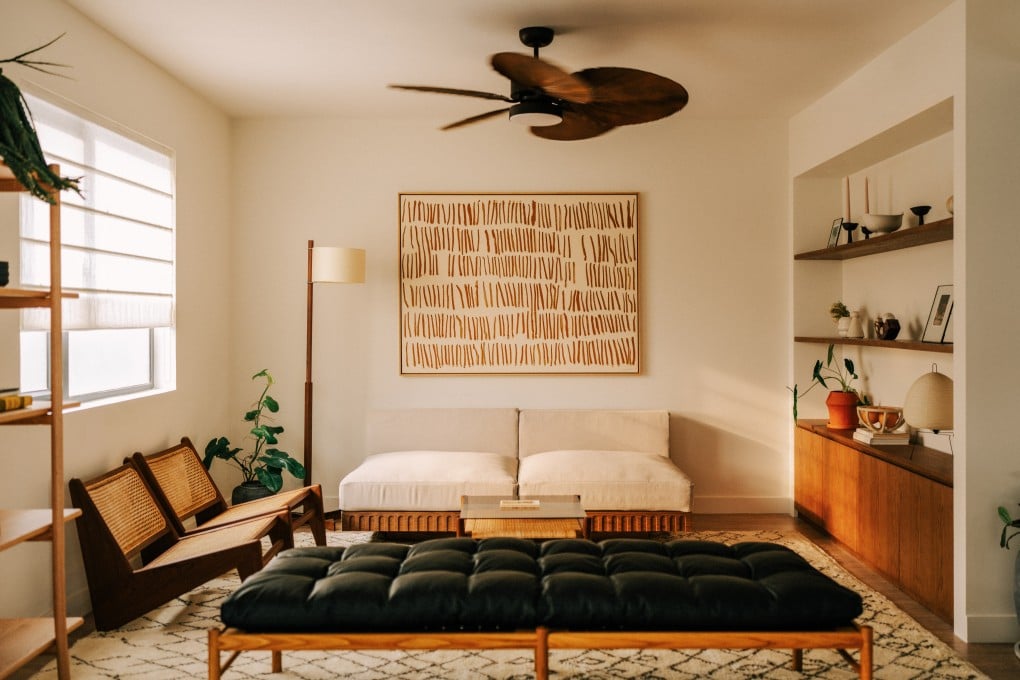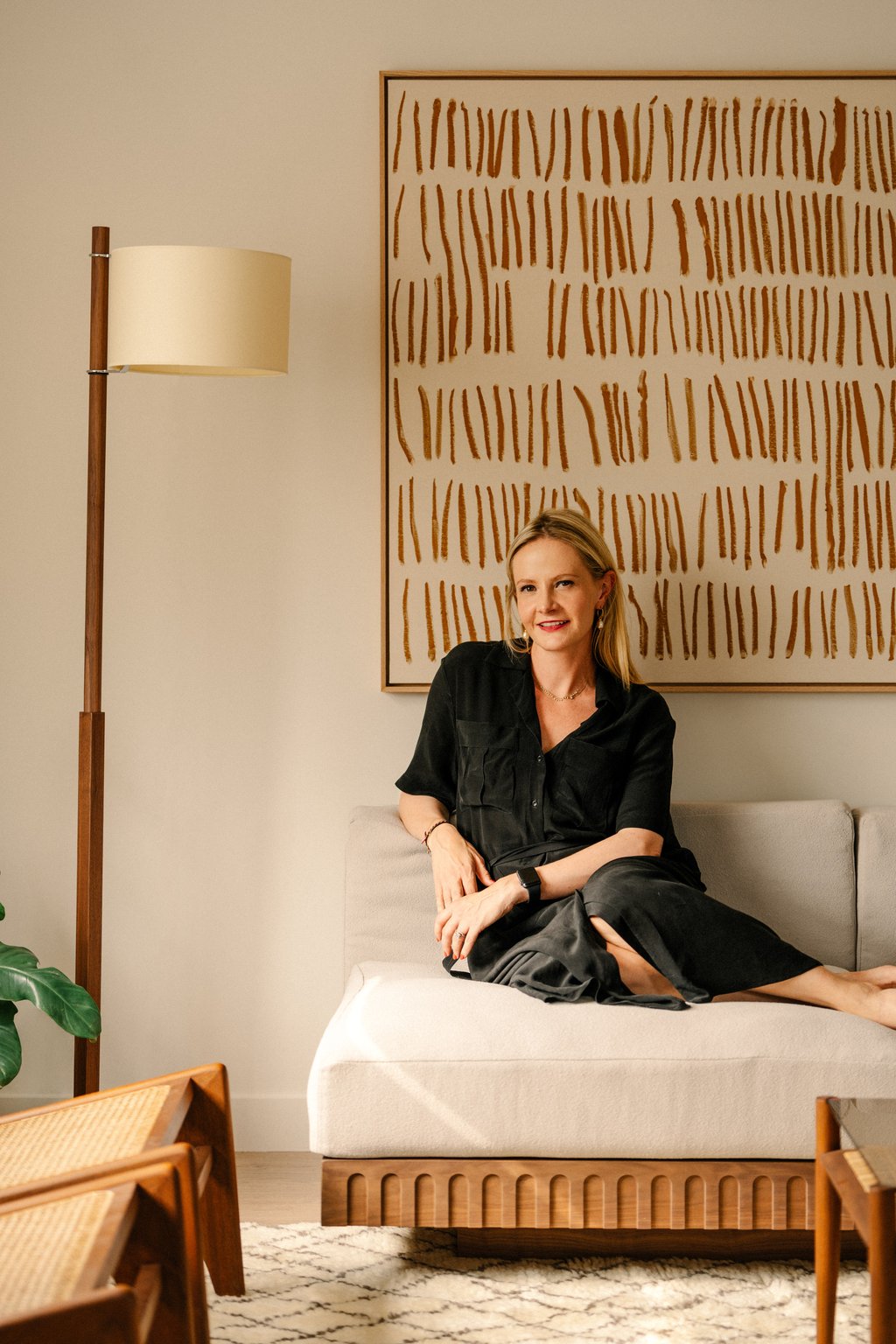Hong Kong village house given a Balinese vibe with Japanese wabi-sabi touches and Scandinavian-style furniture – inspired by artist’s line drawing
- A designer combined Scandinavian, Moroccan and Japanese elements in the renovation of a four-bedroom village house in Lantau, Hong Kong
- An artist’s single-line drawing was the driving force behind the design, which incorporates natural wood and rattan and leans on a minimalist, rustic aesthetic

Great things often stem from simple beginnings. American interior designer Jocelyn Liipfert Lam, of LIIPSTIIK, adopted a line as the driving force behind the design concept for her most recent project, a 2,100 sq ft (195 square metre) village house in Shui Hau, on South Lantau in Hong Kong.
While spending time getting to know her clients and discovering the type of interior they envisaged for their home, she was struck by one of their art pieces – a single-line drawing by Aung Myint, the father of Burmese modern art.
“I was so inspired by this Burmese response to the modern art movement that I felt it would be amazing to focus on the intersection between modern Western and Asian design in the interior concept for this house – particularly via Scandinavian, Moroccan and Japanese influences,” says Liipfert Lam, who grew up in Hong Kong and returned after stints in Shanghai, London, Paris and Texas.
“This would also embrace my clients’ love for art and adventure travel, their Western upbringing – they are an American-Australian couple – and their Hong Kong base.”

Liipfert Lam’s clients, who have a young child and a couple of dogs, bought the four-bedroom, three-and-a-half-bathroom property during the coronavirus pandemic with a view to making it their first family home.
Not particularly old, the house was in a fairly decent shape and the couple kept its inverted layout, with the living spaces on the top floor to benefit from an abundance of natural light, and the bedrooms on the darker ground and first levels.